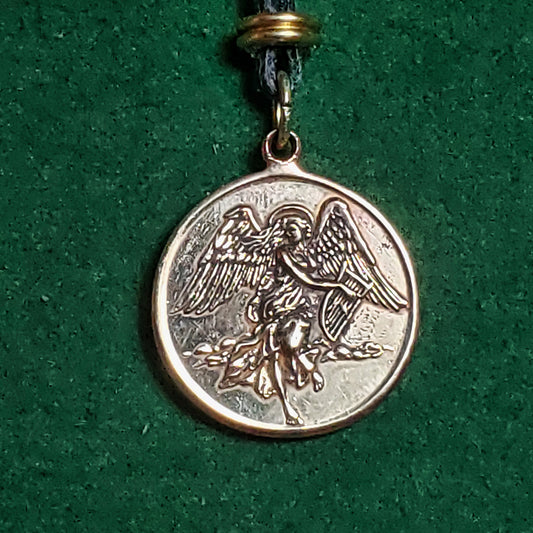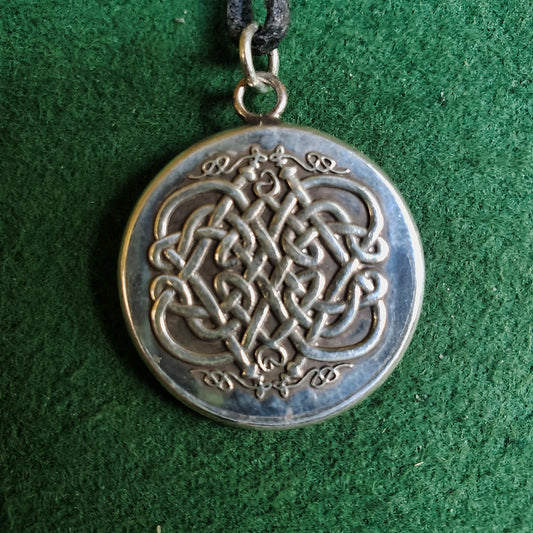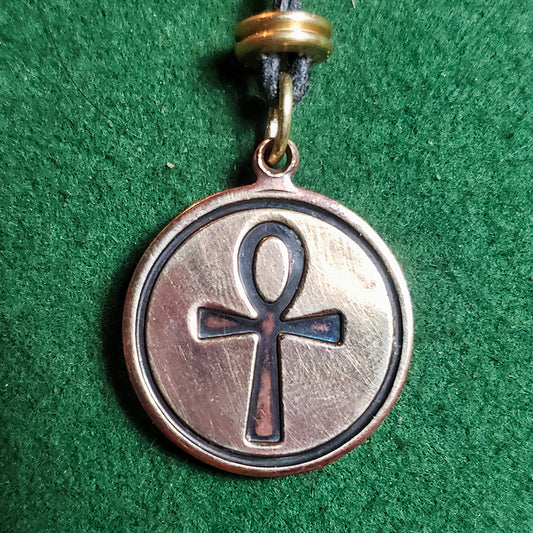
Discover The Ankh
Robert ClarkShare
The Ankh, often referred to as the key of life, crux ansata, or the Egyptian cross, is a timeless symbol with a rich history that spans thousands of years. Its origins can be traced back to ancient Egypt, where it was used as a powerful emblem of life, death, and rebirth. Over time, the Ankh has transcended its Egyptian roots to become a universal symbol of enduring significance in various cultures and belief systems.
The Ankh's history can be traced back to the dawn of civilization in the Nile Valley. It is one of the most iconic symbols associated with ancient Egypt and has been a part of Egyptian culture for over 4,000 years. The word "Ankh" itself is derived from the Egyptian word "nh," which means "life." The symbol consists of a T-shaped cross with a loop at the top, resembling a key or a mirror image of the female reproductive system.
In ancient Egypt, the Ankh was a powerful symbol representing life and immortality. It was often depicted as being held by gods and goddesses and associated with divine protection and guidance. The loop at the top of the Ankh symbolizes the sun rising over the horizon, and the crossbar represents the sun's path across the sky. This interpretation highlights the connection between life, death, and the sun's daily cycle, emphasizing the eternal nature of existence.
The Ankh played a significant role in Egyptian religious and funerary practices. It was commonly used in burial rites to ensure a successful transition to the afterlife. Priests and pharaohs were often depicted holding an Ankh during religious ceremonies, symbolizing their authority and their role as intermediaries between the mortal world and the divine.
The Ankh was closely associated with several Egyptian deities, each of whom contributed to its significance and meaning:
- Isis: The goddess of life and fertility often depicted holding an Ankh. She was believed to possess the power to grant life and protect the deceased in the afterlife.
- Osiris: The god of the afterlife and resurrection, commonly seen carrying the Ankh. The Ankh symbolized the key to the realm of the dead, where Osiris ruled.
- Ra: The sun god represents the eternal cycle of life, death, and rebirth. The Ankh was often linked to the journey of the sun and the promise of renewal.
- Hathor: The goddess of love, beauty, and motherhood, frequently portrayed with an Ankh in hand, emphasizing the nurturing aspect of life.
These deities, among others, helped reinforce the Ankh's role as a symbol of life, immortality, and the transition between the mortal world and the afterlife.
The symbolism and aesthetic appeal of the Ankh extended beyond the borders of Egypt. As cultures encountered and interacted with the Egyptians, the Ankh appeared in various forms across time and place. Its legacy can be traced through history, notably in the following contexts:
With the conquest of Egypt by the Roman Empire, the Ankh made its way to Rome, where it was incorporated into Roman jewelry, art, and religious practices. It was often associated with the goddess Venus and became a symbol of love and fertility.
Some scholars have suggested that the Ankh's shape influenced the design of the Christian cross. While the Ankh predates Christianity, and the two symbols have different origins and meanings, there are visual similarities between the looped cross of the Ankh and the Christian cross.
During the medieval and Renaissance periods, alchemists adopted the Ankh as a symbol of spiritual transformation and the pursuit of immortality. They saw it as representing the philosopher's stone, a mythical substance believed to transmute base metals into gold and confer eternal life.
The Ankh has found new life as a symbol of spirituality and personal significance in the contemporary world. It is often worn as jewelry, a tattoo, or incorporated into art and fashion. Some people use the Ankh to symbolize hope, renewal, and personal growth, drawing inspiration from its ancient Egyptian roots.
The Ankh is sometimes seen as a mystical and powerful symbol in the New Age and various occult traditions. It is believed to hold spiritual and metaphysical properties, including the ability to channel and focus energy, promote healing, and connect with higher realms of consciousness.
The Ankh has also been adopted into the religious practices of some African diaspora traditions, such as Vodou and Santeria. These syncretic faiths represent the continuity of life and spirituality.The Ankh's history is a testament to the enduring power of symbols and their ability to transcend time and place. What began as a symbol of life and immortality in ancient Egypt has evolved and adapted, taking on new meanings and cultural contexts throughout history. Its enduring appeal reflects the universal human desire to understand the mysteries of life, death, and what lies beyond. Today, the Ankh continues to be a symbol that resonates with people from various backgrounds, offering a timeless connection to the past and a bridge to the future.





